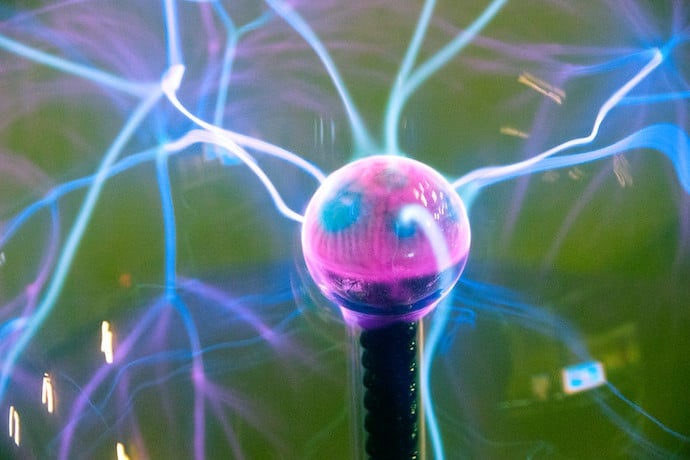Electricity is so much a part of our everyday existence that we don’t even stop to think about what it is and how it works. (Shocking, isn’t it?) It’s become especially prominent in recent decades with the creation of electric vehicles or EVs. (Tesla immediately comes to mind,
however, Ford makes an EV truck, and Caterpillar has a massive 240-ton, 22-foot tall mining truck that uses batteries.)
Electronics projects use electricity, too. It’s possible to build computers with Raspberry Pi and Arduino boards. And, of course, electricity is used in batteries for phones, remote controls, and other devices.
So, what IS electricity? The answer is both simple and complex. In simple terms, electricity is charged matter like electrons and protons that move in a current, either statically— think static electricity—or dynamically, like a battery that powers a car.
Electricity also can flow in two different ways: in one direction only (Direct Current or DC) or back and forth (Alternating Current or AC). In the late 1800s, DC and AC electricity competed to become the US national standard for electrical delivery, with AC winning. However, DC is used in computers and electronics.
Whether AC or DC, all electricity has three basic components that can be thought of like water passing through a hose. Voltage is like water pressure. Current is determined by the diameter of the hose. And Resistance is any obstruction that slows the water down as it passes through a hose.
Electrical Circuits
Electricity is only useful if it is part of an electrical circuit. In its simplest form, a circuit can be made up of a battery (power source), some cable (conductor), and a light bulb (resistance), or whatever device will be using the electricity. Circuits also can include a switch to control electrical flow through a circuit.
Watts
A watt measures the number of electrons traveling through a circuit in one unit of time. Watt is named after James Watt, a Scottish inventor, mechanical engineer, and chemist whose steam
engine helped start the Industrial Revolution in the late 1700s.
Watts vs Watts Hours
There are two ways to measure electricity flows. Electric power measures capacity in watts. Electric energy measures the delivery of electrical power over time. Electric vehicle batteries measure energy in hours, for example, 1 kilowatt per hour or 1kWh. Electric utility bills are
calculated based on electric energy for a specific month.
Measuring Electricity
In the same way that objects are measured in feet and inches, as well as weight, electricity is measured with four different units. These units are based on a measurement standard, the International System Units (SI).
Ohms
An ohm measures the resistance of a current flow through a circuit. Ohm is named after
Georg Simon Ohm, a German Physicist.
Volts
A volt measures the energy needed to move an electrical charge between two points in a circuit. One volt measures the electric potential between two points in a circuit when a one-amp current dissipates one watt of power between those points. A volt is named after Alessandro Volta, an Italian physicist who created the first chemical battery.
Amps
An amp measures electric current or the number of electrons flowing through a circuit. Amp is shorthand for Ampere which is named after the French physicist Andre-Marie Ampere.
Current Wars
In the late 1800s in the United States, as electricity became more common, there was a need to define the type of current to use in the electrical grid that delivered electricity to homes and businesses. Nikola Tesla and George Westinghouse promoted alternating current. Thomas Edison and others wanted direct current. Street lights used high voltage AC while indoor lights from Edison used low voltage DC. When Westinghouse showed that high voltage AC could be stepped down to low voltages for indoor lighting, AC spread quickly because it could be transmitted over longer distances from central locations.
Learn More
Electricity Basics
https://www.freeingenergy.com/understanding-the-basics-of-electricity-by-thinking-of-it-as-water/

